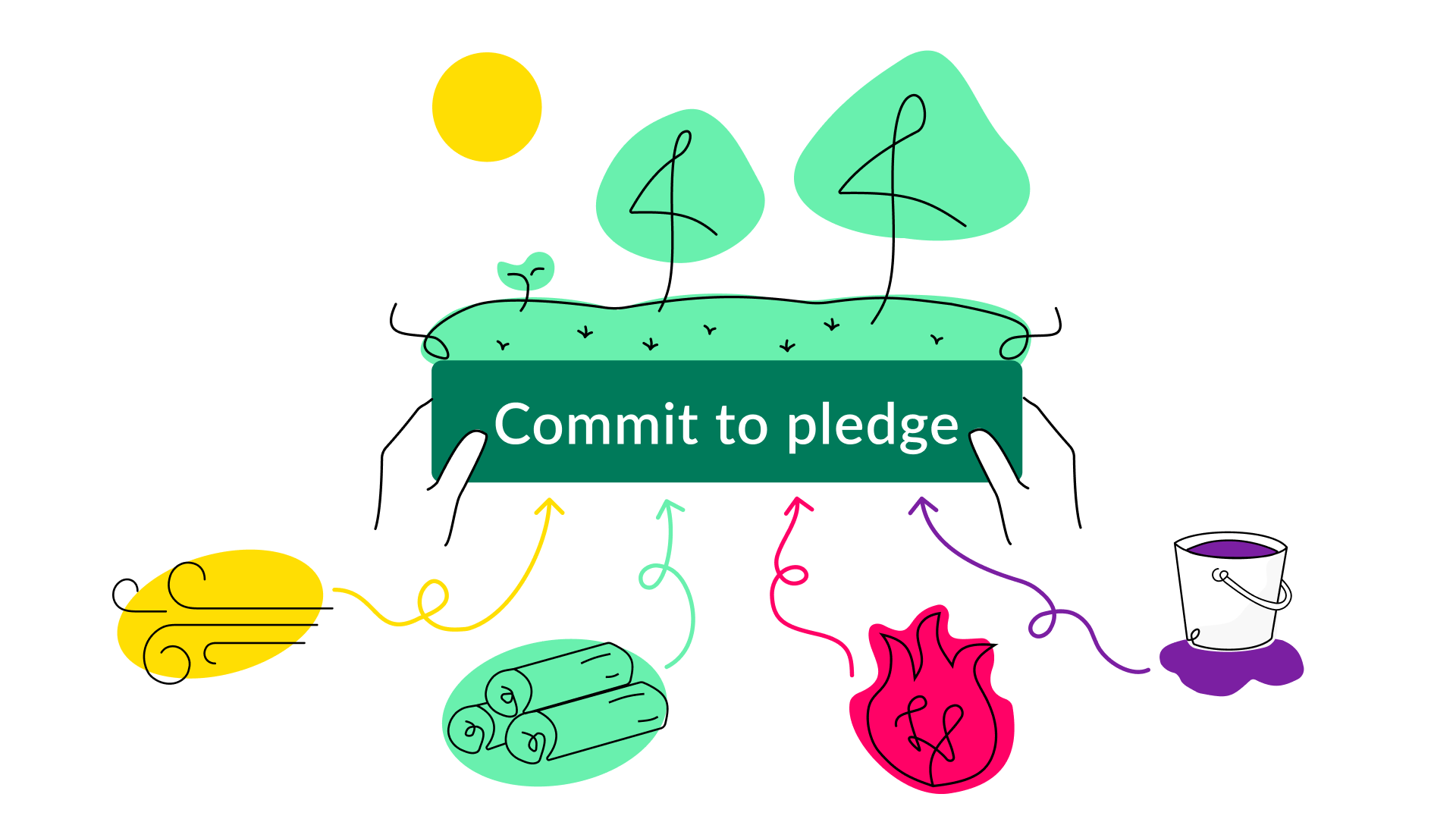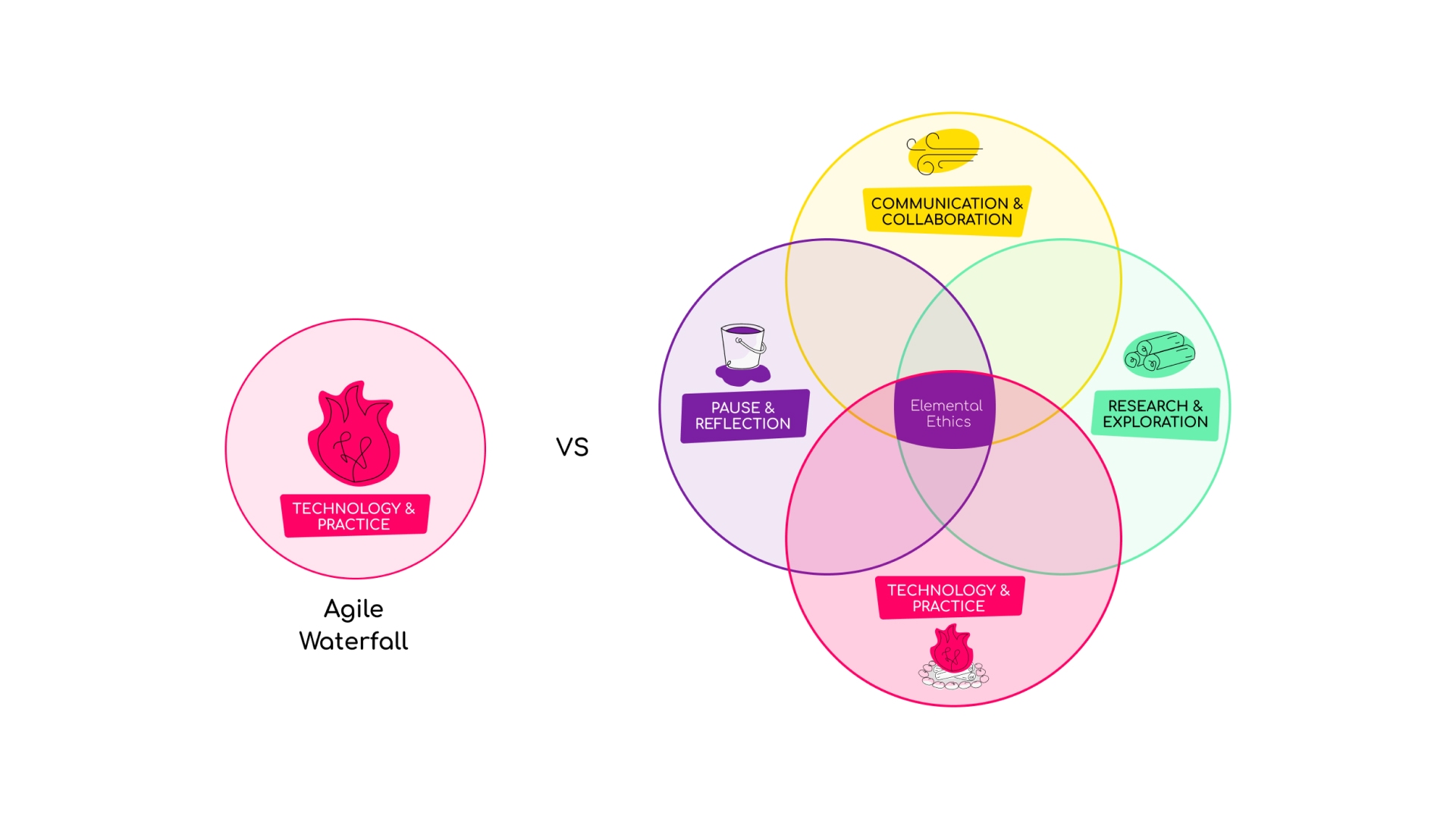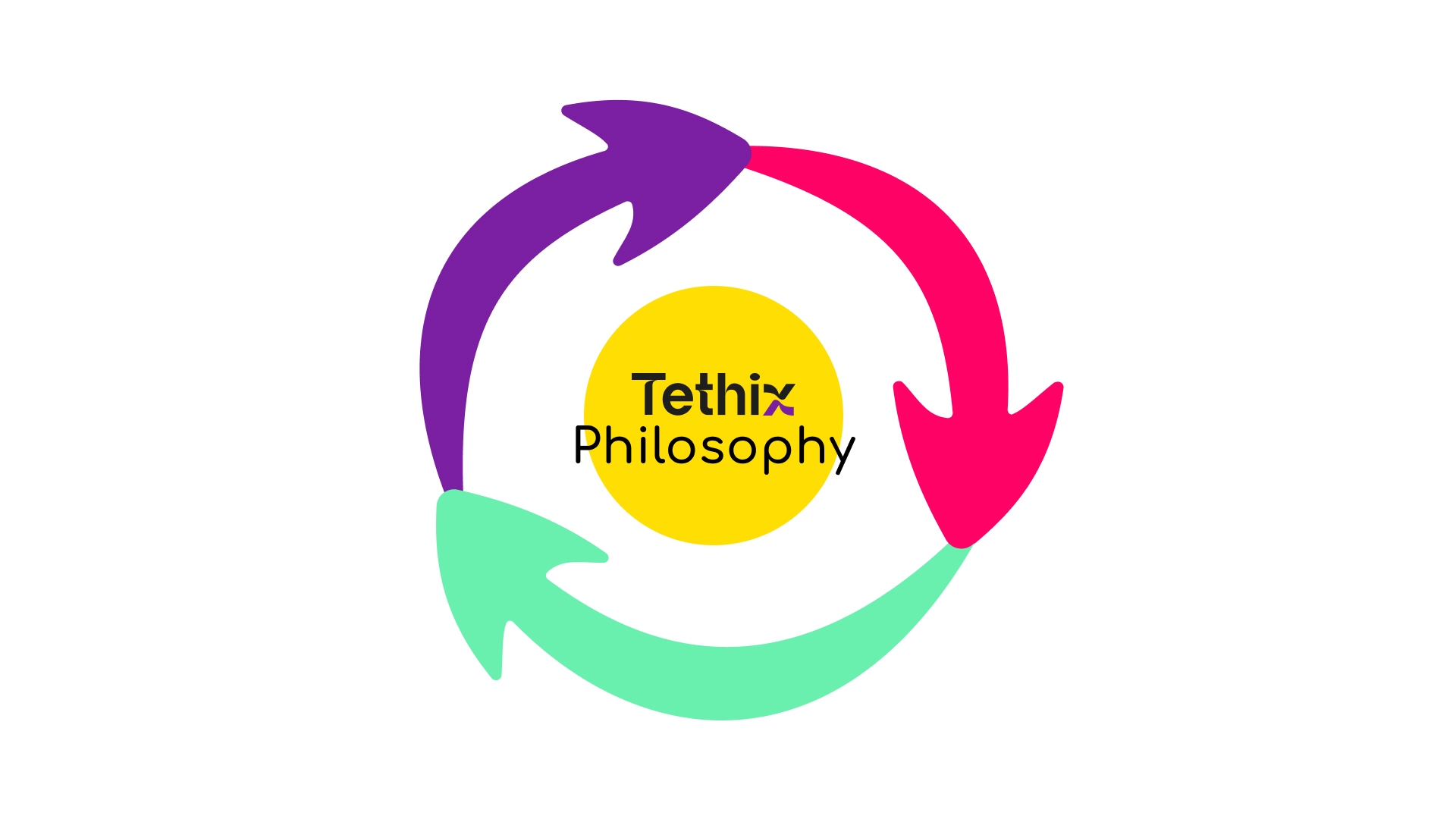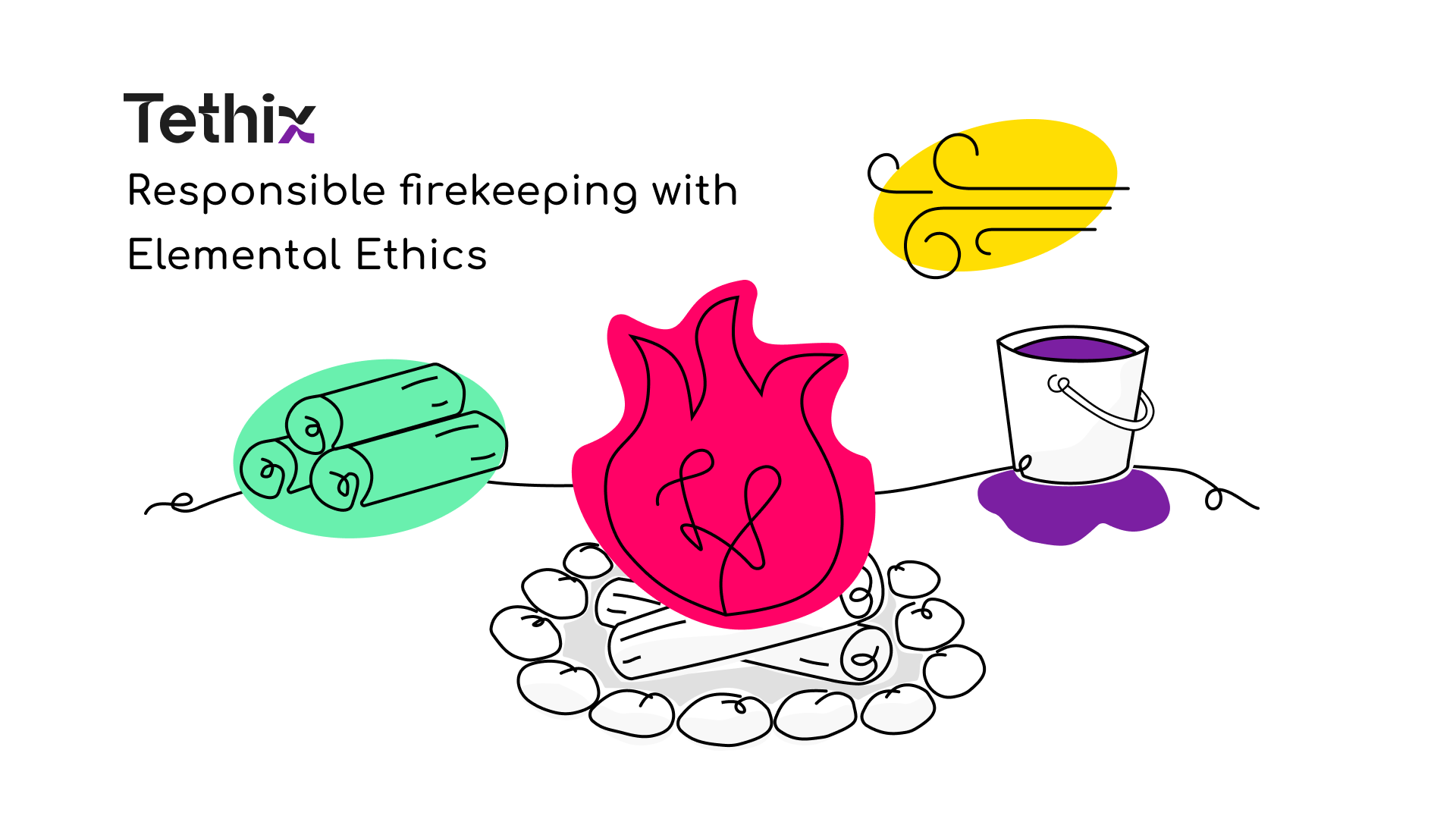Rainbows are real and magical. They represent life in all its majestic beauty and brilliance. Children draw them in depictions that reflect their pride, joy, and dreams of peace and harmony. They have symbolic meaning across differing cultures, ranging from hope, good luck, equality and new beginnings to portals crossing realms and transitions to the afterlife. They are present in the stories we tell and have permeated the cultural imagination for generations.
In a more preferable world, our technologies refract like rainbows. Serving as cultural prisms that inspire stories across various civilisations, embodying hope, equality, and the beauty of diversity. But as we evolve technologically, the cultural narratives surrounding our inventions have taken a darker turn. This brings to mind Arthur C. Clarke’s observation that “any sufficiently advanced technology is indistinguishable from magic.”
While the magic of yesteryears was often filled with rainbows, unicorns, and boundless imagination, our modern magic – our technology – has been sullied by cautionary tales. Enter ‘Black Mirror,’ the iconic series that serves as a metaphorical dark lens through which we now view our technological trajectory enshrined in the brilliant Netflix series, with problematic tech playing the leading role. In these stories, technology is addictive, invasive, controlling and all round dystopic. These stories reflect our fears. They reflect the dangers of the technologies we create that serve a crucial role in society. They draw attention to risks and bring them into our collective awareness. Black Mirror is a cautionary tale… humans, beware of our own creations.
But we need to counter this. We also need tales, imagery and depictions of futures that reflect our dreams, highest ideals and deepest desires for realising our potential. We need rainbow mirrors to help us depict technology as a core driver of our evolution as a species in positive ways.
The scope of our creations – the spectrum of possible futures – are first imaginative. Because of this, the stories we dream of, then narrate, can become self-fulfilling prophecies. Our persistent depictions of technological dystopias have shaped what we create. And yes, science fiction is an inspiration for many tech entrepreneurs.
Taking this necessarily further, technology is ontological. There are feedback loops at its core. Daniel Fraga, author of Ontological Design, captures the idea that by stating that when we design objects, spaces, tools or experiences, we are also ‘designing humans’ (he frames it as “designing human agents”).
So what sort of humanity do we value? What sort of humanity might we be able to design together? What role might technology play?
Our perspective at Tethix
We (at Tethix) are not technological-determinists, believing that our technologies solely determine our futures. Nor do we believe the future needs to be darkly transhuman. To the contrary, our philosophy guides us in sensing our future as founded by what is deeply human: love, challenge, personal growth, community and connection to nature and each other. A future such as this will only come about if the stories we tell and choose to believe are fundamentally different from those that predominate today.
With this said, it’s our belief that the technologies we create play a central role in driving progress towards a world where humans live in harmony with earth systems. These technologies can shape our relationships with each other and the world around us. This occurred from the earliest and simplest form of using knowledge to create stone tools, and ways to communicate through visual and written language. All the way through to the modern technologies that form the basis of the infrastructure we use to communicate, manufacture products and shape our civilisation today.
The importance of the role is undeniable. And we are still early in understanding the implications of our creations.
Tech’s refraction of values
The technologies we create are more than just tools; they’re mirrors that reflect our collective values and biases. While many being the offspring of Enlightenment ideals – emphasising logic, reason, and control over nature – they also amplify these values back into society. This has often sidelined more empathetic, compassionate forms of intelligence. Or the wisdom most prominent in indigenous ways of knowing, creating and being.
Now, as we stand at a crucial intersection of human history and technological evolution, there’s a pressing need to bring balance. We need to integrate empathy, compassion, and diverse cultural perspectives into our technological designs, not as afterthoughts, but as foundational elements. This could act as a counterweight to the overly rationalistic and control-oriented biases that have thus far dominated our technological landscape.
Both ‘I think therefore I am’ AND ‘I am therefore I feel’.
Mostly, we’ve built tech with the idea that it’s a neutral tool, not really affecting who we are – this is what’s called ‘technological orthodoxy.’ It assumes that new tech is usually a good thing and doesn’t consider its wider impacts on society or human behaviour. But the reality is, tech isn’t neutral; it changes how we think, feel, and interact with each other. So, we need a new approach for designing with shared human values in mind. This ‘axiological design’ is not just one way of doing things; it’s a mindset that reminds us that tech has the power to shape our world, our relationships, and even our values. An approach that is well articulated in this article from the Consilience Project.
The point here is that many of our current technologies are born of our lack of moral imagination.
The role of moral imagination
Moral imagination is like creative theatre for our minds. A co-authoring of different scenes where we explore and rehearse various paths of action and the related moral implications. It’s about using our imagination to explore questions about what living a good life looks like, along with how we should individually and collectively act in ways to get us there. It’s imagination that draws on cognitive, social and emotional intelligence.
When it comes to shaping our technology, we can reflect a little on history and our bio-psycho-social context as to how we got to such a predicament.
The western enlightenment period brought forth a flourishing of ideas over the course of the 17th to 19th centuries. It spawned more rigorous scientific inquiry, enabled a breaking away from religious dogma and led to the creation of modern forms of government and education. The economic belief systems that came out also set the foundations for an industrial society within capitalism. Upon reflection, one might note we likely missed the ‘enlightened’ part of the “enlightened self interest” that Scottish political economist and moral philosopher Adam Smith envisioned. What has come about in many of our systems and institutions is rational, cold and utilitarian. People are seen as assets or resources. The natural world is something to extract capital from. This mindset has helped to build our patriarchal and mechanised world. The form and function of the technologies we’ve created, our education, social class structures and most of modern life over the past 150 years has been shaped to fit this purpose.
Eastern philosophies, indigenous wisdom and women have been intentionally and systematically shunned, ostracised and penalised. We missed the elements of enlightenment as being more holistic, compelled by story, nurturing of the human spirit, our potential as beings and deep spiritual connection to our earth and all of life. Had these elements been more prominent, our tech might have been less about ‘killingry’ and more about ‘livingry’.
Too often, the dominant narratives shaping our technologies have been deeply influenced by military imperatives and a western, rationalist approach.
There’s no doubt that agencies like DARPA have pushed technological boundaries, but primarily within frameworks that prioritise defence and national security and the dynamics of the military-industrial-complex. While the innovations are groundbreaking, this has led to an arsenal of technological solutions designed more for conflict than human wellbeing. Eastern philosophies, indigenous wisdom, and women have been marginalised in this process. If these voices had been at the forefront, we might have developed technologies more in line with Buckminster Fuller’s concept of ‘livingry’ rather than ‘killingry.’ This approach would emphasise the nurturing of the human spirit, holistic wellbeing, and a harmonious existence with Earth and all its life forms.
By integrating these often-overlooked perspectives into the design process, we might shift from creating tech that is merely an extension of power structures and survival mechanisms, to technology that nourishes our potential as interconnected beings. Imagine a technological landscape less about zero-sum game scenarios and more about cultivating deep spiritual connections, communal growth, and stewardship of our planet.
The bio-psycho-social context
The emergent landscape of our technological world isn’t just a reflection of socio-economic systems or abstract values; it’s a bio-psycho-social manifestation shaped by persistent stressors of modern life. The rat race, the erosion of community due to rampant individualism, and the acceleration of information and communications technologies all contribute to a constant ‘fight or flight’ mode. Hindering our brain development in ways that impair social and emotional capacities. This might well be an under-explored influence that shapes our tech design and development context. But rather ironically, the technologies that could be helping us connect and grow as individuals and communities are often designed contrary to how humans naturally learn and form bonds. They’re tailored more to short-term engagement metrics rather than long-term wellbeing. When our design focus is driven by this kind of environment, the output can hardly be holistic.
This is where axiological design comes into play. By applying a principled judgement about human value and biology in the design process, we can better align our technologies with how humans actually function and what they need for psychological and physical wellbeing. There are several frameworks that come from this viewpoint such as METUX and many others. These design paradigms could open the door to technologies that are not only tools but also extensions of our social fabric, serving to reduce stress and cultivate more meaningful connections.
The interface of understanding and action
There is, of course, more to this picture than I can possibly do justice in this post. Our deeply practical orientation at Tethix means we’re not afforded the opportunity of publishing a book on these topics (not yet, anyways). There is also a problem here worth calling out, something that can be likened to the fairly rigorous and detailed hundred page PDFs published on tech ethics and responsible innovation all too often. This is a poor interface for people to engage with, deepen their understanding of, and then act upon new knowledge. This mismatch between what is commonly delivered and the ways people actually interact, learn and evolve behaviour is one of the big reasons we see such a massive gap between the tech we say we want to build and what we actually build.
Essentially the interplay between our historical and bio-psycho-social context has influenced how we shape technology. It’s influenced the development of our cognitive, social and emotional abilities to relate to each other, to define and harness what we truly value and work together to design and build our civilisation. It’s contributed to a deficit of moral imagination in shaping our technology.
But we’re usually bad at doing things before we get good. We fall a lot before we learn to walk well. In that sense we can see this as a natural progression of our species learning how best to harness the powers of imagination and creation. We’re doing very well at showing where, when and how we have fallen and will no doubt trip and fall some more. For now we need to get back up and paint colourful pictures of where we can get to.
Why rainbow mirrors matter
If a black mirror view of technology is one that is pessimistic and dystopian, a rainbow mirror view is one that is more optimistic and bordering on utopian (think of this less as “no place”, utopia’s etymological roots, and more or a guiding hope towards some place better, or less wrong than where we are today). The black and grey mirrors reflecting our complex relationship to technology still serve a purpose, because it‘s never all rainbows, butterflies and unicorns. But, when it comes to the tech tales we tell, the ones that serve as the basis for new creations, it’s absolutely essential that we focus more on that beautiful spectrum of light.
Rainbows are literally a reflection, refraction and dispersion of light in the water droplets in the air. Bringing forth the spectrum of colour we all find so enchanting. They evoke positive feelings, brightness and hope. And if we are to be honest we do need more existential hope to steer us from believing the inevitability of technological dystopia and apocalypse.
This is not to dismiss the realities of our predicament.
We are at tipping points in earth system boundaries. Government surveillance, encroaching authoritarianism and surveillance capitalism are real. Our loss of privacy is an existential threat to our humanity, just as much as the earth system calamities we observe unfolding around us (moving beyond the reductionist carbon tunnel vision is beyond the scope of this post). Our mass media monopolies and algorithmic feeds of diversion and polarisation are tearing at the threads of trust that bind our social fabric. The issues are complicated and the paths to solutions require significant systems change and mass scale collaboration and coordination. These paths also need moral imagination and inspiring narratives born of the creative tension that comes from diverse people (re)imagining and creating together. Spawning rainbow mirrors that reflect the paths and visions of what is possible and preferable. Coming together and using moral action to drive visions to fruition.
These rainbow mirrors are edging on utopian, and utopia basically means no place. So this is not about getting to some impossibly perfect end state. But more about tales and artefacts that recognise the colours are a reflection of the perfection in imperfection, in all its magnificent beauty. Our imagination precedes our creations and we must always remember that what cannot be imagined cannot be created.
It’s imperative to remember that rainbows, in all their splendour, consist of diverse colours coexisting harmoniously. In a similar vein, the ‘rainbow mirrors’ we envision for the future of technology must be shaped by the diversity of cultures and perspectives that make up our world. Monochromatic tech solutions, informed by a narrow cultural or ethical lens, are bound to create more problems than they solve. By actively incorporating insights from diverse cultures, social norms, and ethical philosophies, we can design technologies that are more inclusive, equitable, and holistically beneficial. This is not a ‘nice-to-have’; it’s a must.
Helping to imagine rainbow mirrors
These colourful reflections of technology as a force for good, existential hope, human diversity and flourishing come about through intentionally slow, creative and deliberative processes. This is at the basis of our focus on codesign and exploring the paths to better tech futures with you.
If you want to help craft rainbows with us, sign up to become a Tethix Pathfinder.




